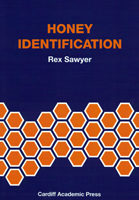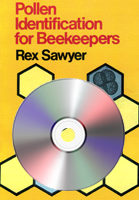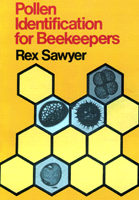This is a practical book, designed both for small-scale beekeepers and for those engaged in the honey industry, to explain the principles that can be applied to determine a honey’s origin. Such investigations involve the microscopic examination of pollen and other particles in a honey which reveal its nectar sources, honeydew content, and region of production.
In view of the vast number of recorded nectiferous plants, and beekeepers, spread over the world, the above objective might appear to be a task beyond the compass of this small book. However, the examination of the pollen in our local honeys and in the commercial, imported, honeys shows that there are surprisingly few plants acting as major nectar sources for bees. It is also found that the areas of production may be divided into a small number of broadly defined regions. It is thus possible from the identification of a few plentiful and significant types of pollen in honey to illustrate the principles of honey identification and in fact to name the nectar sources and the regions of production of most honeys found on the British market. A knowledge of 67 pollen types is employed.
This is but an introduction to the subject of melissopalynology. A subject deserving of great extension and development.





